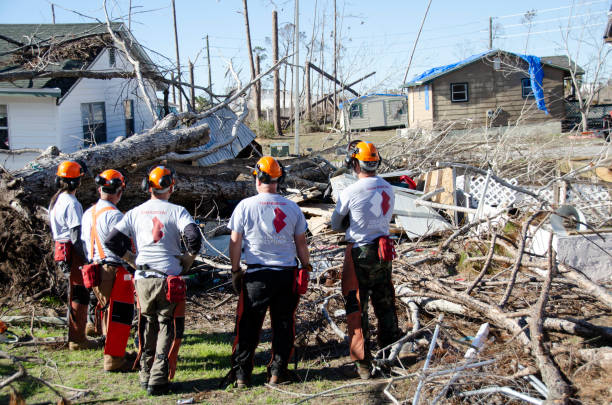In the face of natural disasters and emergencies, communities often find strength in unity. Volunteering for disaster relief becomes a beacon of hope and a testament to the resilience of the human spirit. Social volunteering during times of crisis ensures survival and well-being of individuals stuck in life altering situations.
Natural disasters, from hurricanes and earthquakes to floods and wildfires, can strike with little warning, leaving devastation in their wake. In such moments, the immediate response is critical to mitigate the impact on affected communities. This is where disaster relief volunteers play a pivotal role. Their swift and selfless actions provide essential aid and comfort to those grappling with the aftermath of unforeseen calamities.
At the heart of disaster relief volunteering lies empathy – the ability to feel and understand the pain and suffering of others. Volunteers step forward with open hearts, driven by a shared humanity that transcends geographical boundaries. This empathy fuels their commitment to helping those in need, as they witness the immediate and tangible impact of their actions on individuals facing the most challenging moments of their lives.
Volunteering for disaster relief encompasses a broad spectrum of roles, each integral to the overall response effort. From first responders providing medical assistance and rescue operations to volunteers distributing food, clothing, and shelter, there is a diverse range of tasks that collectively contribute to the recovery and rebuilding process. This collaborative effort ensures a comprehensive response that addresses the multifaceted needs of affected communities.
Local volunteers often play a crucial role in disaster relief efforts. Their familiarity with the community allows for more nuanced responses tailored to the specific needs of the affected population. Whether organizing evacuation shelters, coordinating search and rescue missions, or providing emotional support, community-led initiatives strengthen the bonds that hold societies together in times of crisis.
Effective disaster relief volunteering requires preparation and training. Organizations dedicated to emergency response often conduct drills and training sessions to equip volunteers with the skills needed to navigate challenging scenarios. From first aid and emergency medical procedures to communication and logistical coordination, these training programs ensure that volunteers can respond effectively and safely in high-pressure situations.
This goes on to show that volunteering in any shape or form is a hope for humanity. One such organization that allows individuals to volunteer for providing education for under privilege children is Pehchaan The Street School. The volunteers at Pehchaan The Street School work hard to teach these students and help them get a chance at better life.
Thus, one can say that whether volunteering in organization such as Pehchaan The Street School or providing aid as a disaster relief volunteer. Both of these are done to save lives and give them a better chance of survival.
Volunteering for disaster relief is not without its challenges, and the psychological impact on volunteers can be profound. Witnessing the aftermath of a disaster, encountering human suffering, and facing the unpredictability of crisis situations can take an emotional toll. Recognizing and addressing the mental health needs of volunteers is a critical aspect of sustainable and resilient disaster relief efforts.
While local volunteers are the backbone of disaster relief efforts, international volunteers often play a vital supplementary role. Non-governmental organizations (NGOs) and global humanitarian agencies mobilize teams of volunteers from around the world, bringing diverse skills and resources to affected regions. This international solidarity emphasizes the interconnectedness of humanity and the global responsibility to support communities in times of crisis.
The impact of disaster relief volunteering extends beyond the immediate aftermath of a crisis. Volunteers contribute significantly to the long-term recovery and rebuilding process. Whether engaging in infrastructure projects, providing ongoing mental health support, or participating in community development initiatives, their sustained efforts contribute to the restoration of normalcy and resilience in the face of future challenges.
Thus, they become the architects of resilience, laying the groundwork for communities to bounce back from the most formidable challenges. Through their selfless actions, volunteers contribute to the rebuilding of shattered lives and shattered infrastructures. They play a pivotal role in not just addressing the urgent needs of the present but in fortifying communities against future adversities, fostering a sense of strength and unity that transcends the immediate crisis.
Volunteering for disaster relief is a testament to the indomitable human spirit and the capacity for compassion in the face of adversity. In times of emergency, volunteers become the driving force behind hope, healing, and recovery. Their dedication, empathy, and collective efforts not only provide immediate relief to those in need but also lay the foundation for resilient communities capable of overcoming the most formidable challenges. As we celebrate the unsung heroes who respond to emergencies with courage and selflessness, we recognize that, in the darkest moments, the light of volunteerism shines brightest.
